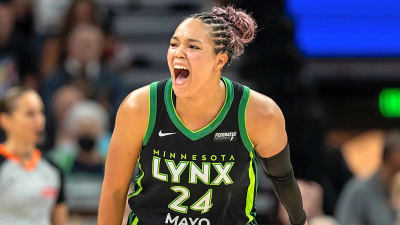
North London is buzzing with reports that Bukayo Saka is edging closer to signing a groundbreaking new contract with Arsenal that would see him become the club’s highest-paid player in history. The England international is expected to land a deal worth £300,000 per week, a figure that would comfortably eclipse the current salary structure at the Emirates. For a player who has grown from Hale End graduate to one of the most influential wingers in Europe, this deal feels like both a reward and a gamble.
At present, the wage hierarchy at Arsenal places Kai Havertz at the top on around £280,000 per week, closely followed by Gabriel Jesus on £265,000. William Saliba’s recent extension places him at roughly £250,000 a week, while both Martin Ødegaard and Declan Rice are on around £240,000. The club’s new striking addition, Viktor Gyökeres, earns around £200,000 per week.
Saka, under his current terms, is reported to be earning significantly less than that bracket, closer to £195,000. If the new contract goes through, the jump would be historic, both for him and for Arsenal’s modern wage model.
Such a sharp increase does not just make him Arsenal’s highest earner, it sets a precedent. It demonstrates the faith the club has in his ability to carry the team forward, while also placing a considerable burden on his shoulders. Every goal, every assist, and even every dip in form will now be viewed through the lens of those massive wages.
The Current Wage Landscape At Arsenal
The Emirates has witnessed a steady rise in salaries over the past three years as Arsenal re-established themselves as a consistent force in English and European football. Havertz, signed from Chelsea in 2023, sits at the top of the financial tree with his £280,000 per week deal.
Gabriel Jesus, who arrived from Manchester City to spearhead Arsenal’s attack, follows at £265,000. Saliba, long considered one of the best defenders in the Premier League, signed a new deal that secured his services for the long term at around £250,000 a week.
Just below that level are two of the most influential figures in the squad: captain Martin Ødegaard and midfield general Declan Rice, both on £240,000. Their wages reflect their status as leaders in Arteta’s project. Viktor Gyökeres, who arrived this summer from Sporting CP, has been added to the list of top earners with his £200,000 per week package.
Into this financial structure steps Saka, poised to leapfrog all of them if his new deal is confirmed. Arsenal will be walking a fine line here. On one hand, they are securing the future of their most prized asset. On the other hand, they risk disrupting the delicate balance of a squad where multiple players already sit in the £200,000-plus bracket.
Why Arsenal Would Make This Move
Rewarding Saka with the most lucrative contract in the club’s history serves multiple purposes. First, it acknowledges his loyalty and progression from Hale End to superstar status.
Unlike many of his peers who were bought at high cost from abroad, Saka represents the Arsenal identity, someone the fans feel belongs to the fabric of the club. Tying him down to a long-term, elite contract is a way of protecting that legacy and avoiding the nightmare scenario of him running his deal down.
Second, it is a retention strategy in a competitive market. Players of Saka’s quality do not go unnoticed. European giants such as Real Madrid and Bayern Munich would certainly keep tabs on his situation if any contractual uncertainty emerged.
Even within the Premier League, rivals like Manchester City and Liverpool could have the financial muscle to tempt him. Offering a salary package that reflects his market value ensures Arsenal stay in control of his future.
Third, it sends a message of ambition. By putting Saka at the top of the wage table, the club is declaring that it is prepared to compete not just for domestic honors but also in Europe. It is a sign to fans and critics alike that Arsenal intend to hold on to their best players rather than allow them to be picked off by bigger or richer clubs.
There is also a broader financial balancing act at play. Arsenal’s revenues have been growing due to Champions League participation, commercial partnerships, and a consistently sold-out Emirates Stadium. While £300,000 per week is a colossal figure, the club is in a far stronger financial position than in previous years, making such a move more sustainable.
Risks And Expectations That Come With The Paycheque
Of course, the move is not without its risks. For Saka, the pressure to justify such a wage packet will be immense. Every dip in form will bring heightened scrutiny. Supporters and pundits alike will question whether he is delivering enough to merit the investment.
Unlike his earlier years, when he was celebrated as a rising talent, he will now be judged as one of the Premier League’s elite, and the margin for error will shrink.
Injury management will also become critical. Saka has shouldered a heavy workload in recent seasons, both for Arsenal and for England. Fatigue and recurring knocks have occasionally affected his rhythm, and with a contract of this magnitude, any absence will feel even more costly. The club will have to carefully manage its minutes to protect its most valuable asset.
There is also the matter of dressing room dynamics. Havertz, Jesus, Saliba, Ødegaard, and Rice are all crucial players who could look at Saka’s new deal as a benchmark for their own negotiations. Arsenal must be cautious to avoid triggering a wave of wage demands that destabilize their budget. This is where careful communication and transparent planning from the board will prove vital.
Finally, Arsenal itself must ensure that this financial leap does not hamper future flexibility. Big wages can be justified when they lead to trophies, but they can quickly become millstones if results falter. The club’s hierarchy will be hoping that tying Saka down not only secures a superstar but also inspires others to rise to his level.
Final Thoughts
As of today, the deal has not been officially signed, though both Arsenal and Saka’s camp are thought to be edging towards a final agreement. Mikel Arteta has been open in his admiration for Saka, calling him a cornerstone of the club’s project.
The move, if completed, would rewrite Arsenal’s wage history, lifting Saka to a pedestal above all his teammates. It is a gamble, yes, but perhaps one worth taking. Arsenal know that to challenge consistently for Premier League titles and to compete deep into the Champions League, they cannot afford to lose players of Saka’s quality.
By breaking their own ceiling, they are betting not just on his talent but on his ability to lead a new generation of success at the Emirates.
More must-reads:
- Navy stays unbeaten with historic passing day against Air Force
- Phillies make bizarre decision on Nick Castellanos before NLDS Game 1
- The 'MLB playoff debut strikeouts leaders' quiz
Customize Your Newsletter
 +
+
Get the latest news and rumors, customized to your favorite sports and teams. Emailed daily. Always free!








